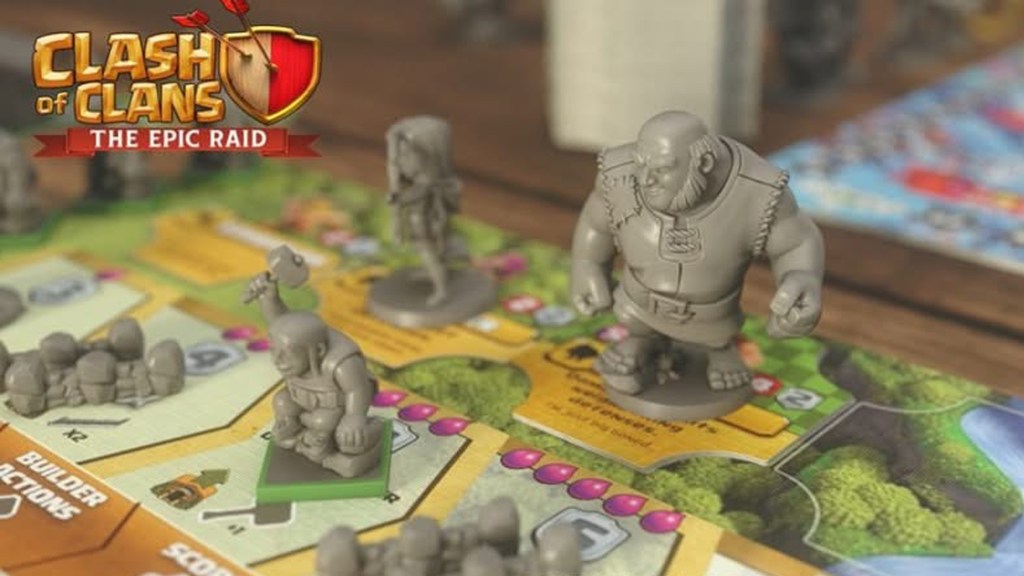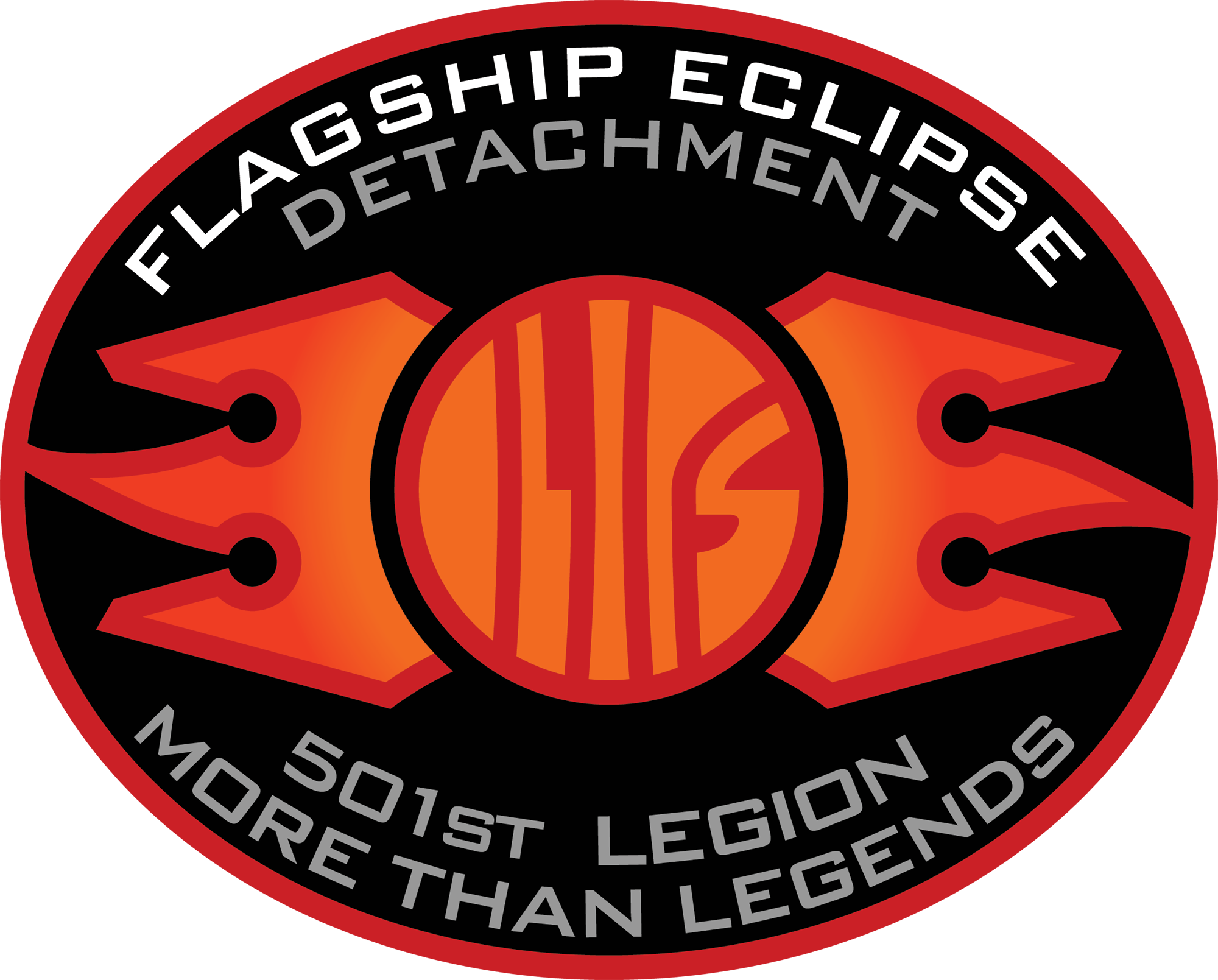
Clash of Clans has continued to be one of mobile gaming’s most popular games for a reason, and now it’s making the jump to tabletop with Clash of Clans: The Epic Raid from Maestro Media. The game lived up to its reputation for raiding and crushed its Kickstarter goal in just 24 minutes, and now the campaign is working on a host of stretch goals in addition to its big expansions and optional upgrades that take an already impressive tabletop presence up another level. I had the chance to get some time with the game and put the gameplay through its paces, so if you’re still on the fence with jumping in, hopefully I can help with that and explain why you should care about Clash of Clans: The Epic Raid.
The Basics
The original version of Clash of Clans is still going strong long after its initial release back in 2012, and a big reason for that is the addictive gameplay mix of building up your village, leveling up your troops, and raiding opponent’s villages while defending your own territory, with all of it wrapped in an animated and brightly colored art style that leaps off the screen. Designers Eric M. Lang and Ken Gruhl are big fans of the franchise, and you can absolutely tell that when you see the game in action.
Just like the mobile game, Clash of Clans: The Epic Raid focuses on a blend of building up your village with key upgrades and recruiting powerful characters to your army as you protect your own base and raid your enemies at the most opportune moments. This is done through a mix of worker placement and tactical choices that will have you pivoting between being more offensive towards your opponents or hunkering down and building up your own defenses to sway any potential attackers.

Your Town Hall is at the center of your village, and as long as you have enough resources you can place a worker on a specific spot on the map to upgrade the Town Hall and unlock new defenses and even another builder to help speed up the process, and this also adds victory points to your final total. You’ll be able to place a builder on a build column and purchase a tile to add to your village, and these either give you straight up resources or allow you to multiply the resources you get each turn, whether that be gold, elixirs, and gemstones, which are the primary way to buy tiles and soldiers.
The other part of going to a build space is buying a unit to add to your army, and these will range from standard units like Wizards, Barbarians, and Wizards to more powerful units like Giants, Dragons, and the Archer Queen. The more powerful units cost more resources, but they can make an immediate difference in your next raid, as they also come with unique bonuses to help on dice rolls during that next attack.
We’ll get into raiding in a minute, but let’s go over the other actions available on the map. You can have your builders take the 1st Player token as well, or you can have them move to the defenses section, which allows you to build walls, cannons, archer towers, and wizard towers in your village to fend off would-be attackers. There are also two options in which to raid, with a standard raid that gives no bonuses, while the epic raid spot gives you bonus resources when you set out on a raid.
Raiding Chaos

This leads us to the main player interaction portion of the game in raids, which, as its name suggests, has your forces raiding one of your opponent’s villages. When you choose this space on the map during your turn, you then send all of your army units to a chosen player’s base, and this is where some tactical decisions need to be made. You’ll need to survey their village’s defenses and see if there’s a clear weak point to attack, as this will dictate whether or not you have to attack a wall or deal with a cannon or just waltz on in and take the (hopefully) easy win.
If a Tile is completely blocked off by walls, you’ll need to attack those first, but if there’s even one space open alongside it, you can bypass that and attack the building on the tile. That said, if there’s a tower or cannon connected to that tile, you’ll then leave yourself open to an attack from your opponent first, and depending on the roll of the dice, this can devastate your raiding plans. That’s why it’s key to have a nice variety of units at hand and plan accordingly, as there will always be a random factor in any combat situation.
Now, when you think raiding, you often think of someone stealing all of your things or destroying your building and setting you back, but that’s thankfully now how this works. The best part of this mechanic is that if an opponent attacks a tile and sets it on fire, they take the resources listed on that tile for themselves, but they don’t steal any from you; they just take it from the reserves. Then, on the next turn, the fire goes out and you are free to resume your strategy.
Overall Impressions

While having your village raided by an opponent does obviously give them a boost thanks to the resources they gain, you don’t actually get hit with any sort of lasting setback, meaning you can just jump right back into what you were doing beforehand. It allows you the freedom to try and raid even when you don’t necessarily feel powerful enough and get something out of it, and it also encourages you to hit at a bevy of opponents rather than just focus on one, and that keeps everyone honest and moving forward in some way. There’s not a lot of take that in this game, despite the offensive mechanics involved with raids, and the nature of dice rolls means even when facing insurmountable odds, you have a chance at stemming the tide.
During my time with the game, I leaned into a more defensive play style that focused on defenses and Town Hall upgrades, while my opponents leaned into other approaches. Those various strategies felt like they could all be successful, and no player was clearly overmatched or left in the dust. I only had the chance to experience a handful of different units just based on their more expensive cost in early turns, but even with more standard units, the combat was fun and easy to grasp. Being able to assess which opponent to raid and from which point is consistently rewarded, and regardless of your play style, you can find a way to succeed along the way.
There’s also more strategy when you consider that certain tiles, especially the more powerful ones, are more limited, and that goes for units as well. They also start to introduce new strategies, as if your opponent has a dragon and you have a bunch of walls, those become irrelevant as dragons can just fly right over them. The miniatures themselves also look fantastic, and the bright and vivid aesthetic from the game is accounted for in the board game version as well.
There are also two welcome expansions that bring in elements like a whole additional resource, as well as an expansion that makes the game playable for up to 6 players, and then there are spells to factor in as well. On the stretch goals front, alt art tiles have been unlocked, as well as a bonus dragon unit, though fans will likely want to get to $500K for the campaign, as that will unlock an additional unit in the adorable baby dragon.
I truly enjoyed Clash of Clans: The Epic Raid, and all I could think the whole time I was playing was that I wanted to play even more. The game feels approachable and immensely replayable, and still rewards tactical thinking and paying attention to your opponents’ play styles and choices. Simply put, I can’t wait to get this on the table for round 2, and you can check out the full campaign right here.
Will you be backing the campaign for Clash of Clans: The Epic Raid? Let us know in the comments, and you can talk all things gaming and tabletop with me on Bluesky @knightofoa!
The post Clash of Clans: The Epic Raid Soars on Kickstarter, and Here’s Why You Should Care appeared first on ComicBook.com.


